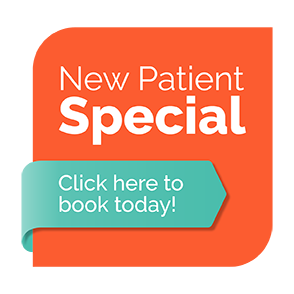Physical Therapy in Vernon Hills IL
Why is Physical Therapy important in Vernon Hills IL?
Physical therapy improves your overall health and quality of life, and it’s all dependent on your quality of care. At our chiropractic and physical therapy clinic in Vernon Hills IL we will assess the situation with our consultation and then move forward to provide an individualized care plan to help you on your wellness journey.
- Pain Management: Physical therapy can help reduce chronic pain through targeted exercises, manual therapy, and other techniques like heat or cold therapy. This is especially important for conditions like arthritis, back pain, and injuries.
- Improving Mobility and Function: Whether you’re recovering from surgery or an injury, physical therapy can help you regain ability to move and perform daily activities. PT focuses on improving range of motion, flexibility, and strength.
- Preventing Surgery: In some cases, physical therapy can be a non-invasive way to treat a condition that might otherwise require surgery. It helps with strengthening muscles, correcting posture, and addressing joint issues.
- Rehabilitation After Injury or Surgery: After an injury or surgery, physical therapy plays a crucial role in the recovery process. It helps rebuild strength, mobility, and function to get people back to a quality life.
- Improved Posture and Balance: Physical therapy can help correct poor posture and improve balance, reducing the risk of falls and other injuries, especially in older adults.
- Increased Strength and Flexibility: Many physical therapy programs focus on strengthening muscles and increasing flexibility, which can prevent future injuries and improve overall physical health.
- Customized Treatment Plans: Our Physical therapists at Integral Medical create individualized treatment plans that cater to your specific needs, whether they’re dealing with injury recovery, chronic conditions, or preventive care- IMR is here to give you back your quality of life through our quality of care.
PT helps with the following:
- Acute and chronic pain
- Arthritis pain
- Ankle and foot injuries
- Back and neck pain
- Dizziness and balance deficits
- Hand trauma and upper extremity injuries
- Hip and knee injuries
- Joint replacement
- Leg injuries and knee pain
- Muscle strains and sprains
- Orthopedic injuries
- Overuse injuries
- Personal and auto injuries
- Pre- and post-surgical conditions
- Repetitive stress injuries
- Shoulder and elbow injuries
- Sports and performance injuries
- Work-related injuries
Why IMR for your Physical Therapy needs?
We work with you to customize a plan that is exclusively yours. Our team will provide one on one attention during your PT treatments. You will be in attentive hands the entire time you are on the treatment floor.
Integral Medical incorporates both Chiropractic care and physical therapy as they can work together synergistically to promote healing, improve mobility, and manage pain. While they each have distinct approaches, combining the two can often enhance the benefits of treatment and help individuals recover faster and more effectively. Ultimately, the collaboration between a chiropractor and physical therapist helps address both the structural and functional aspects of healing, leading to more comprehensive recovery and a quicker return to daily activities.
- COMPLEMENTARY TREATMENT APPROACHES
- Chiropractic Care: Focuses on diagnosing and treating musculoskeletal disorders, particularly those involving the spine. Chiropractors use hands-on spinal manipulation (adjustments) to improve spinal alignment, reduce pain, and support the nervous system's function.
- Physical Therapy: Focuses on rehabilitation through exercise, manual therapy, and modalities like heat, cold, ultrasound, or electrical stimulation to improve mobility, strength, and function.
- PAIN MANAGEMENT
- Chiropractic care address pain at its source, particularly when it’s related to misalignment of the spine or joints, this can contribute to nerve compression, tension, or inflammation.
- Physical therapy, on the other hand, targets pain by strengthening the muscles surrounding the affected area, improving flexibility, and using specialized exercises to alleviate discomfort.
- POSTURE AND ALIGNMENT
- Chiropractic care is used to adjust spinal misalignments and improve posture. This can relieve stress on muscles and joints that may be contributing to pain or discomfort.
- Physical therapists focus on posture correction by training patients to adopt better body mechanics in their daily activities, improving balance, and teach exercises that reinforce proper alignment.
- IMPROVED MOBILITY AND FUNCTION
- Chiropractors aim to restore joint mobility, particularly in the spine, neck, and other areas of the body. Adjustments can help alleviate restrictions and pain that may limit movement.
- Physical therapy works to strengthen muscles and restore joint function through exercise. It helps increase range of motion and flexibility, improving overall physical performance and reducing the risk of future injuries.
- REHABILITATION AFTER INJURY OR SURGERY
- Chiropractic care can help address issues like spinal misalignment or joint dysfunction that may have occurred as a result of an injury. Chiropractors assist with pain relief and mobility restoration during recovery.
- Physical therapy is essential for rehabilitation, particularly after surgery or injury. It focuses on restoring strength, flexibility, and endurance through a structured exercise plan tailored to the individual’s needs.
- PREVENTIVE CARE
- Both chiropractic care and physical therapy play a role in preventing future injuries. Chiropractors work on aligning the spine and joints to reduce stress on the body, while physical therapists teach proper movement patterns and exercises to strengthen muscles and enhance stability.
Physical Therapy Services
OFFICE HOURS
Monday
9:00am - 7:00pm
Tuesday
9:00am - 7:00pm
Wednesday
9:00am - 7:00pm
Thursday
9:00am - 7:00pm
Friday
9:00am - 5:00pm
Saturday
9:00am - 12:00pm
Integral Medical and Rehabilitation
3 West Hawthorn Parkway #280
Vernon Hills, IL 60061
(224) 424-3147



